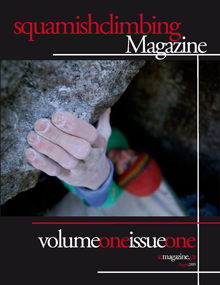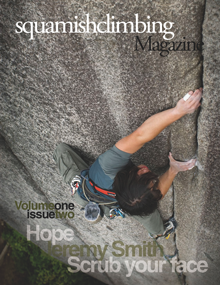We are please to have local physiotherapist William Bateman as a guest contributor for this training article.
“Training the core” is a concept mired in ambiguity. Our understanding of the core has changed significantly so let’s dispel its complexities and learn how to integrate it into our training programs. I’ll start by putting “core” to the side and discuss for a moment what has to happen to the different joints and muscles in our body as a climber reaches for their next hold.
Movement professionals typically think of muscles as serving two purposes. The first is to lend stability to any given joint prior to moving it (the stabilizers – think of the spine as well as your wrist or ankle). The second is to create movement around that joint (the prime movers).
As your subconscious mind prepares to move your body, it’ll recruit your stabilizers first so as to keep your joint in a safe position while it moves. This is reflexive, meaning it should happen automatically. The rotator cuff is a great example of this. The muscles work to suck the long bone of your arm into the socket of the shoulder blade. Once the shoulder is stabilized, the bigger muscles around that joint can pull on the bones to reach for that next hold.
The same can be said for your torso. Before you move, muscles along your spine, in your abdomen, your pelvis and ribcage work together to create stability in your trunk. This should also be automatic. With your torso stabilized, your other trunk, leg and arm muscles are free to move your body up the wall.
Your stabilizing muscles work in unison and are recruited prior to movement to keep your joints ready for the force and torques that are placed on them. We refer to this as your “core stability”, which encompasses every muscle working to stabilize any given joint. Long-gone are the days of training your core with sit-ups.
Take for instance a climber who’s throwing for a dyno – their hands have just met the finishing holds. The climber’s subconscious mind has already reflexively recruited its stabilizers in the trunk, shoulders, elbows and wrists. As their body falls back towards the ground, every muscle in the climber’s body is desperately working together to keep them from slipping off the holds. The stabilizers are keeping joints in a safe range, as the prime movers are slowing the climber’s momentum and trying to bring their feet back on the wall. The load on the climber’s body is too great for the prime movers to overcome and the climber falls off the holds. Hanging there defeated, the climber’s stabilizers turn off.
In this example, the stabilizers performed exceptionally. They turned on when needed and only turned off once it was safe to do so. Not everyone is so lucky. In the same example, the load placed on the body as gravity quickly pulls the climber towards the ground can overcome the force that stabilizers are able to generate. Losing stability while your prime movers are still working to stop movement puts you at risk for injury.
This provides a strong argument for incorporating your stabilizers in any of the training that you do for climbing, whether you’re training endurance, strength, power, or power-endurance. Your stabilizers need to be able to meet the demands of every move you make on the wall. They should only rest when your prime movers are resting, and never before.
The question then becomes how can you effectively train your stabilizers while also training your prime movers. The answer is often found by learning how to use good form in exercises you’re already doing in your training program. I hope this video series will help you understand how to do this.
I’ll start with something simple: the dead-hang. Keep in mind that there’s next to no movement in this exercise. Your stabilizers are being trained statically (static stability). Once you can effectively recruit your stabilizers without movement, you need to learn how to do so dynamically (dynamic stability). I’ll introduce this in our next video by going over dynamic stability in a pull-up.
William Bateman, PT, MScPT, BScKin
Physiotherapist and Owner
Project Physio
Special thanks to Will for the video and tips! Will is a Physiotherapist practicing out of the Ground Up Climbing Centre and Squamish Integrated Health. You can see more of his videos here or visit his website at www.ProjectPhysio.com












